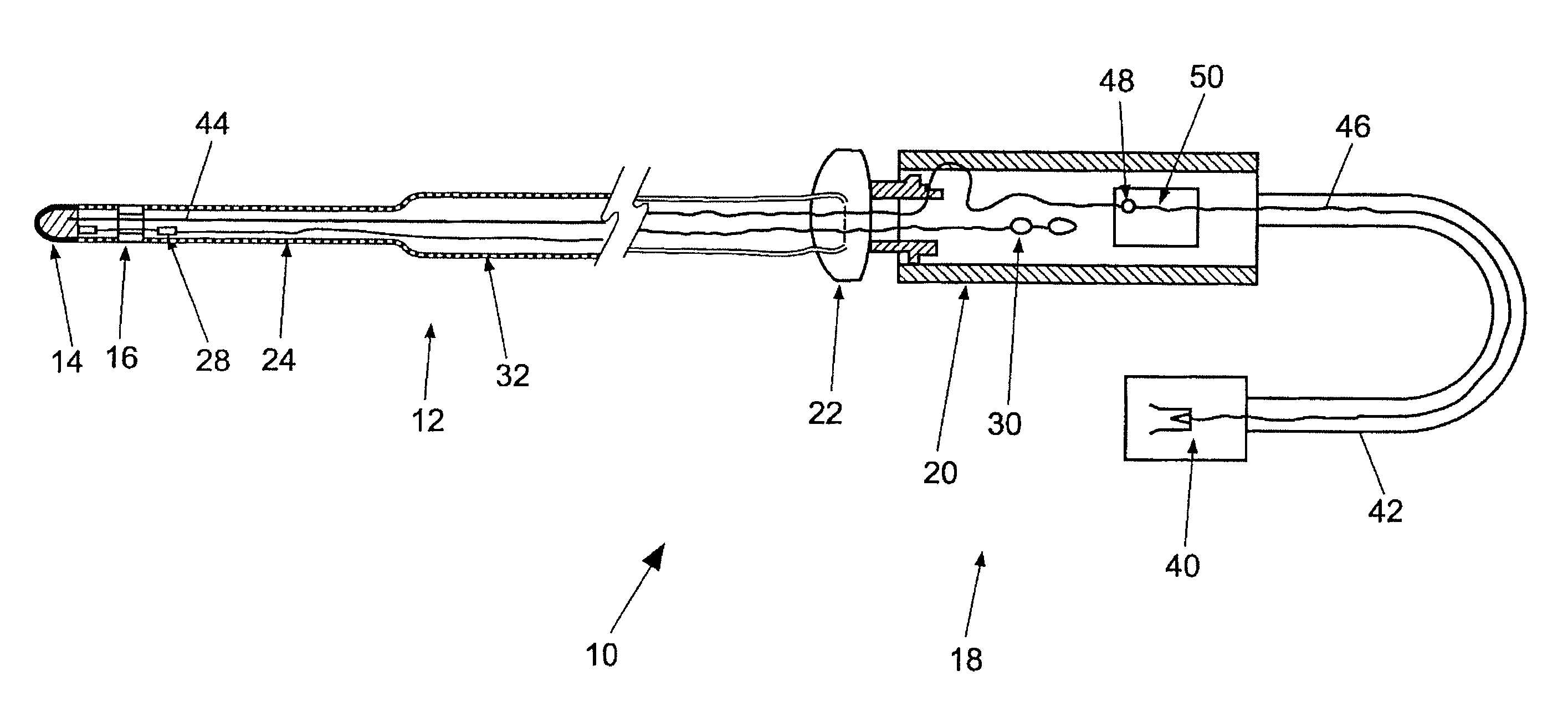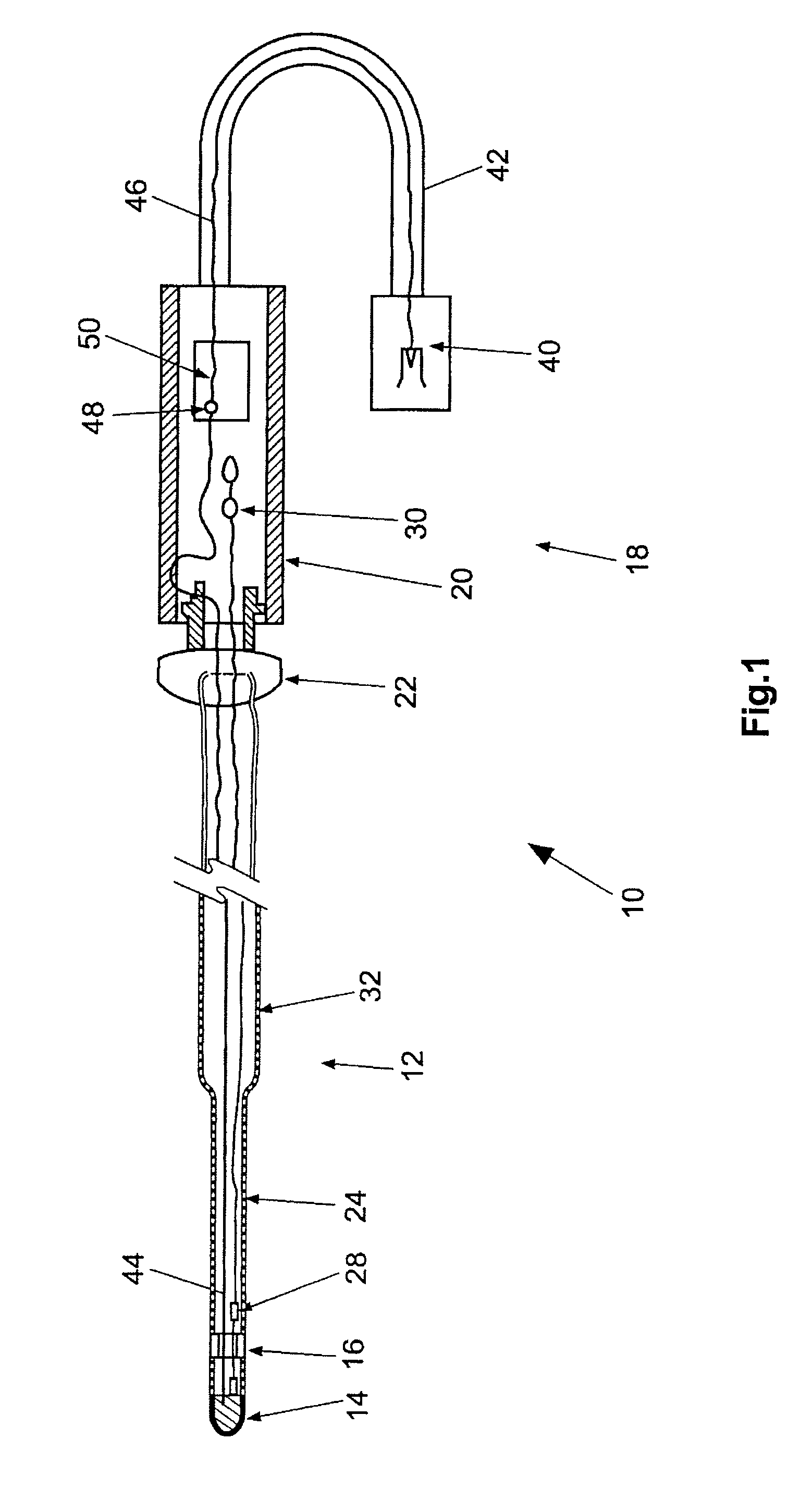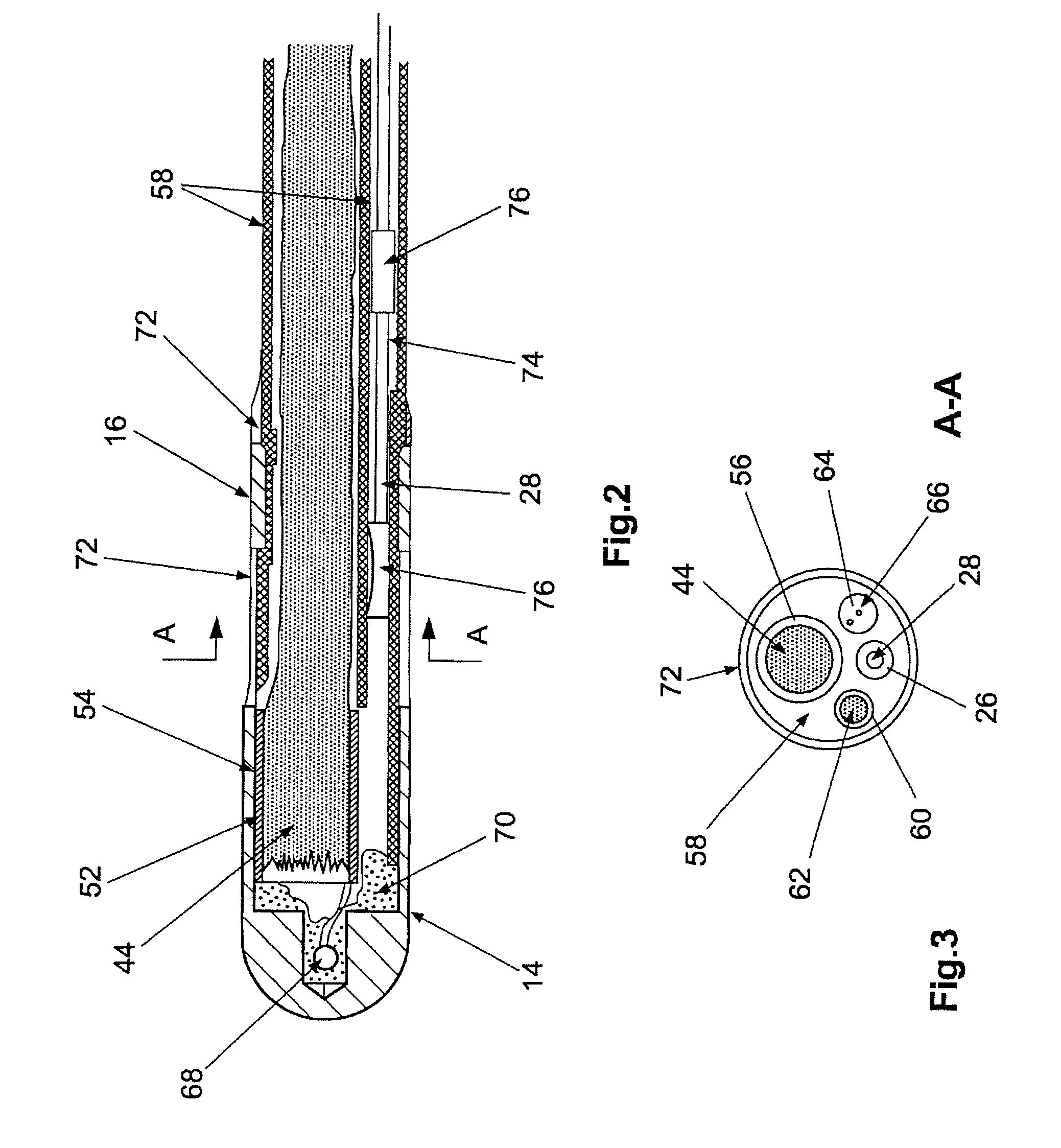Electrode catheter for the electrotherapy of cardiac tissue
a technology of electrotherapy and cardiac tissue, applied in the field of electric catheters, can solve the problems of undesired artifacts, treatment cannot be performed under observation in the course of magnetic resonance tomography, and no longer occurs, and achieve the effect of avoiding tissue injuries
- Summary
- Abstract
- Description
- Claims
- Application Information
AI Technical Summary
Benefits of technology
Problems solved by technology
Method used
Image
Examples
Embodiment Construction
[0046]The ablation catheter 10 illustrated in FIG. 1 has a catheter shaft 12, which is also identified as an electrode catheter 12 in the framework of this description and the claims. The electrode catheter 12 carries two electrodes on its distal end, namely a tip electrode 14 and a ring electrode 16. The tip electrode 14 and the ring electrode 16 are used in the case of tissue erosion (ablation) for delivering high-frequency AC current to surrounding tissue in order to heat the tissue using the AC current enough that it erodes.
[0047]At the proximal end, the electrode catheter 12 is connected to a handle 18, which has a holding part 20 and a displacement part 22. Holding part 20 and displacement part 22 are displaceable in relation to one another in a known way in the longitudinal direction of the holding part 20 in order to cause lateral deflection of a distal end section 24 of the electrode catheter 12. This is performed in a way known in principle with the aid of a control wire 2...
PUM
 Login to View More
Login to View More Abstract
Description
Claims
Application Information
 Login to View More
Login to View More - R&D
- Intellectual Property
- Life Sciences
- Materials
- Tech Scout
- Unparalleled Data Quality
- Higher Quality Content
- 60% Fewer Hallucinations
Browse by: Latest US Patents, China's latest patents, Technical Efficacy Thesaurus, Application Domain, Technology Topic, Popular Technical Reports.
© 2025 PatSnap. All rights reserved.Legal|Privacy policy|Modern Slavery Act Transparency Statement|Sitemap|About US| Contact US: help@patsnap.com



